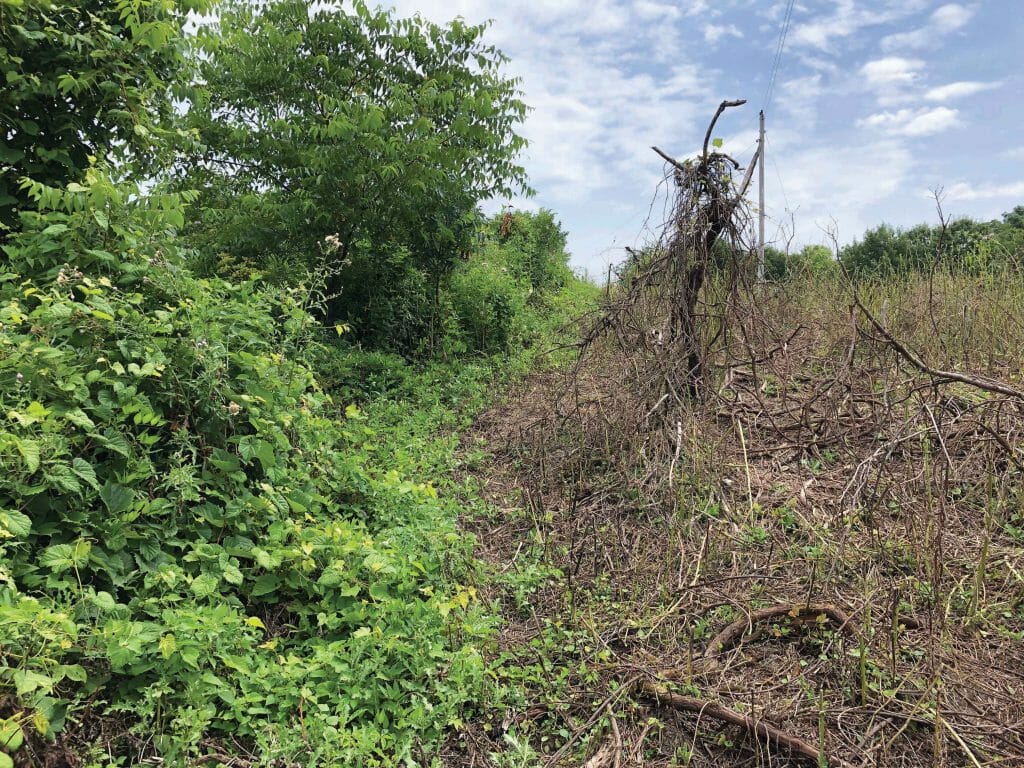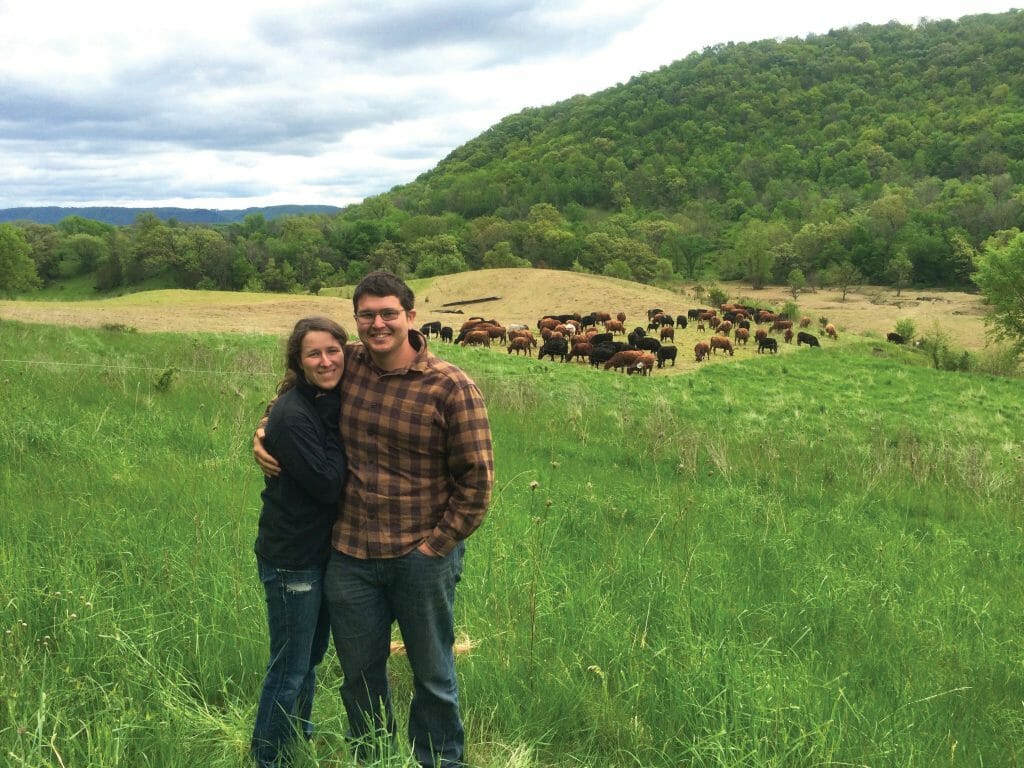Graze More Instead of Owning More
Unique grazing businesses benefit beginning farmers and the land
Odds are you’ve probably heard of or seen goats grazing in your local county park to eat down poison ivy and other unwanted plant species. This practice, referred to as prescribed grazing, is increasingly prevalent in Iowa and beyond – in both rural and urban areas.
The approach of moving a herd of livestock to different parcels of land to graze or browse comes in many different, unique forms. Along with prescribed or targeted grazing, contract grazing (also called custom grazing) is a way of operating a grazing enterprise without needing to own land, and in some cases, without owning the livestock.
These grazing arrangements offer a range of benefits, such as invasive species control without chemicals, the ability to keep vegetation “mowed” down without the need for fuel and less physical labor needed to manage a parcel of land. But they also offer some less obvious benefits, including access to land – particularly for beginning farmers; social engagement; and the suite of soil health benefits that comes with integrating livestock on the landscape.
Land Access Leads to New Business
Adam Ledvina, owner of two businesses – Blue Collar Goatscaping and Iowa Kiko Goats – in Tama, defines his prescribed grazing service as a native land restoration business. Initiated in 2016, with the help of PFI’s Savings Incentive Program, Adam started his business to provide a brush management service that’s morphed into a prairie reclamation service – Adam’s goats were turned into Iowa Natural Heritage Foundation’s Razor Prairie in Jasper Counter in June 2019. “My favorite part about using the goats for conservation is seeing the difference they can make on a landscape without chemicals and machinery,” Adam says. “They make what could be a labor-intensive and exhausting job fun for everyone involved.”
Adam’s “goatscaping” business has been a springboard for other enterprises. “I keep getting jobs because people see the difference goats make,” explains Adam, who now has access to 100 acres of land to custom graze. “That’s enough buffer to acquire more breeding stock and expand my herd.” He has now doubled the number of does in his herd and is thus able to produce more wethers for meat. Increased land access has helped him build his other business, Iowa Kiko Goats, selling goats as breeding stock and meat – either directly off the farm or at sale barns. Adam says the combination of income streams “provides the potential for a full-time paycheck.”

Adam Ledvina’s Kiko goats make quick work of clearing invasive species such as honeysuckle, multiflora rose and poison ivy as seen on the right.
No-Risk Ranching
Greg Judy, a well-known grazier, authored a book titled “No Risk Ranching: Custom Grazing on Leased Land” detailing how he got started farming by leasing idle land to graze with other people’s cattle. He learned that with minimal overhead, no interest payments, no depreciation, no property taxes and no risk of livestock or land prices dropping, his capital was freed to grow his business. Greg lives by a quote from the late Allan Nation: “Your goal should be to make a living from the land, not to own it all.”
“My favorite part about using goats for conservation is seeing the difference they can make on a landscape without chemicals and machinery.” – Adam Ledvina
Beginning cattle farmers Kayla Koether and Landon Corlett, of Decorah, plan to follow the same low-risk principles. They’re working towards making use of marginal land, degraded pastures and overgrown prairies to contract-graze cattle on. “You can drive around on country roads and see underutilized pastures and grasslands that could benefit from grazing and generate income for the landowner,” Kayla says. The best-suited sites would have an existing perimeter fence, but Kayla and Landon plan to use one-strand electric wire to subdivide pastures and graze intensively.

Kayla Koether and Landon Corlett aspire to custom graze cattle on marginal land, such as degraded pastures and overgrown prairies. Landon gained experience working as a farm-hand mob-grazing cattle, pictured here.
“Contract grazing would help us diversify our sources of income, pay for our grazing labor and provide cash flow to help us slowly grow our herd of cattle over time. Then we won’t have to stock our operation by buying cattle outright,” Kayla says. “We’ll also slowly grow a direct-marketing outlet alongside our grazing enterprise.”
“Contract grazing would help us diversify our sources of income, pay for our grazing labor and provide cash flow to help us slowly grow our herd of cattle over time. Then we wouldn’t have to stock our operation by buying cattle outright.” – Kayla Koether
Contract Graze Cover Crops
Cover crops can serve as a bridge to integrating livestock on Iowa’s landscape. “There’s an awful lot of corn and bean ground that isn’t cover cropped and doesn’t have livestock on it, and that’s a waste,” says Wade Dooley of Albion. Adding cover crops to this ground could present prime opportunities for row crop farmers and graziers to enter into contract grazing agreements, in the process helping graziers extend their grazing season, increase land access and potentially employ another family member on the farm without having to expand crop acres.
“Row crop farmers who work with livestock farmers to run cows on their cover crops in the off-season would be double-dipping on their cash rent and yield,” Wade says. “They’d also be improving their soil quality at the same time, and they’d be able to take advantage of cost-share opportunities through the state and federal government.” He adds that an agreement would need to be amenable to everyone involved, and would likely vary from farm to farm. “Fencing, water access and checking cows regularly are all necessary. It’s totally doable and there’s really no good reason not to do it.”
Social Engagement
There’s another benefit to grazing under unique circumstances: People love to see happy animals at work. Adam says he’s been hired to bring his herd to city parks, which increases visibility and awareness of this eco-friendly practice and brings enjoyment to viewers. “People love goats and the cutesy, fun stuff,” Adam says. “So sometimes prescribed grazing serves as a publicity stunt for businesses hosting events.”
Farmers who graze cover crops along frequently traveled roads say it gets local people talking. Since cover crops provide a vibrant splash of green to the contrasting landscape, people’s curiosity is sparked, providing a way to engage with the community. Educational and informational signs that can be seen from the roadway help. It’s also important to display electric fence warning signs when grazing livestock in public areas.
Another novel approach is a practice called solar grazing, where sheep graze under solar panels on solar farms. Their size and behavior make sheep the best-suited for controlling vegetation under solar panels, while offsetting the cost of herbicides or mowing. Solar farms are already fenced in, so the combination provides a winning scenario for producing clean energy. This dual-purpose practice can augment the value of “farming the sun.” Some solar companies are also using sheep as a marketing tool – even installing “lamb cams” for the public’s viewing pleasure.
The underlying component to success in these approaches is customer (landowner) satisfaction. “You can’t overgraze and you need to keep animals fenced in,” Adam cautions. “If you don’t, anyone involved in custom grazing business will get a bad rap. Then people will go back to chemicals and machinery, and that’s what we’re trying to get away from.” When put into practice with proper management, grazing enterprises can provide access to land in ecologically positive and socially engaging ways.
This material is based upon work supported by the Natural Resources Conservation Services, U.S. Department of Agriculture, under number NR186114XXXXG002. Any opinions, findings, conclusions, or recommendations expressed in this publication are those of the author(s) and do not necessarily reflect the views of the U.S. Department of Agriculture.

